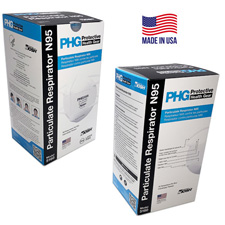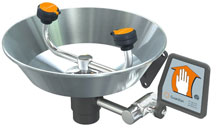| The Home page of ILPI's Safety Data Sheet (SDS) Resource, the leader in SDS information since 1995! | |
| The history and philosophy behind this resource. | |
| A curated collection of books and reference materials concerning Safety Data Sheets and closely related topics. | |
| Paste your plain text SDS into the SDS-Demystifier, and it will be converted into a hypertext-enriched document with links to detailed explanations of each key term. | |
| An extensive list of frequently asked questions about Safety Data Sheets including regulations, content, compliance, and more. | |
| A humorous take on Safety Data Sheet jargon. Fill in the blanks on our entry form to generate a personalized Unsafety Data Sheet to share with your coworkers. | |
| Since 1995, we've maintained this massive curated list of the best places to find Safety Data Sheets on the Internet. | |
| You are here! Way more than a glossary, this hypertext-enhanced resource covers hundreds of SDS-related terms and expert knowledge. Each entry includes both the SDS relevance and links to additional authoritative resources. | |
| Archived results of Safety Data Sheet related polls taken by some of our millions of site visitors | |
| The OSHA regulations behind SDS regulations, including the inspection guidelines and over 400 official interpretations letters under the Hazard Communication Standard | |
| Commercial suppliers of SDS authoring and management software as well as cloud compliance services. | |
| Commercial companies that will create SDS's for your specific needs as well as SDS translation companies. |

Safety signs, banners, and scoreboards? Get yours at Safety Emporium!
Definition

Get your PPE such as made in USA NIOSH-approved N95 masks from Safety Emporium.
A Short Term Exposure Limit (STEL) is defined by ACGIH as the concentration to which workers can be exposed continuously for a short period of time without suffering from:
- Irritation
- Chronic or irreversible tissue damage
- Narcosis of sufficient degree to increase the likelihood of accidental injury, impair self-rescue or materially reduce work efficiency.
Additional Info
STEL's are generally used only when toxic effects have been reported from high acute (short-term) exposures in either humans or animals. An STEL is not a separate independent exposure limit, but supplements time-weighted average limits where there are recognized acute effects from a substance whose toxic effects generally chronic (long-term) in nature.
For example, one can not be exposed to an STEL concentration if the TLV-TWA (time weighted average for an 8 hour shift; see Permissible Exposure Limit (PEL)) would be exceeded. Workers can be exposed to a maximum of four STEL periods per 8 hour shift, with at least 60 minutes between exposure periods.
Books Available
NOTE: We may collect a share of sales or other compensation from the links in the following list:
- "2020 TLV's and BEI's: Based on the Documentation of the Threshold Limit Values for Chemical Substances and Physical Agents & Biological Exposure Indices ...", Paperback, 2020, 254 pages. Estimated price $78.97. Info and/or order .
- "Fundamentals of Industrial Hygiene, Sixth Edition", Hardcover, 2012, 1,248 pages. Estimated price $251.99. Info and/or order .
- "Industrial Ventilation: A Manual of Recommended Practice for Operation and Maintenance, 2nd Ed", Hardcover, 2020. Estimated price $119.96. Info and/or order .
- "Supervisors' Safety Manual, 11th Ed", Hardcover, 2018. Estimated price $168.11. Info and/or order .
- "Safety and Health for Engineers 3rd Ed", Hardcover, 2016, 608 pages. Estimated price $74.35. Info and/or order .
SDS Relevance
PEL's and TLV-STEL's (if they exist) are required in Section 8 (exposure controls/personal protection) of a Safety Data Sheet. These values are usually found for substances that may be inhaled, although some can be absorbed through the skin or eyes (STEL's will often have "-skin" after them when skin exposure is possible). When working with materials that have listed exposure limits, use proper precautions to minimize the generation of a vapor or dust in the first place. Always use appropriate personal protective equipment (PPE) such as gloves, dust masks, and respirators to limit your exposure to chemicals.
Remember, exposure limits are not some magic threshold that define the border between safe and dangerous. A PEL or STEL that was acceptable in 1950 may be recognized as dangerously high today. Therefore, always do everything reasonable to limit the airborne release of chemicals or dusts in the first place.

Safety Emporium carries all kinds of eye/face washes, safety showers, drench hoses and more.
Further Reading
- Occupational Chemical Database at OSHA lists the PEL's and/or TWA's for many substances, health effects, and equipment/manufacturers that can monitor concentration for PEL/TWA compliance.
- Hazardous Substance Fact Sheet for Hydrogen Sulfide at the NJ Dept of Health.
- Exposure Monitoring Requirements for Methylene Chloride are discussed by OSHA.
- Workplace Exposure Limits and Levels of Concern are discussed at NOAA.
- Odor Thresholds for Chemicals with Established Health Standards at Contra Costa County, California.
- Occupational Hygiene - Occupational Exposure Limits, a Fact Sheet from the CCOHS.
See also: PEL and TWA, Threshold Limit Values (TLV)